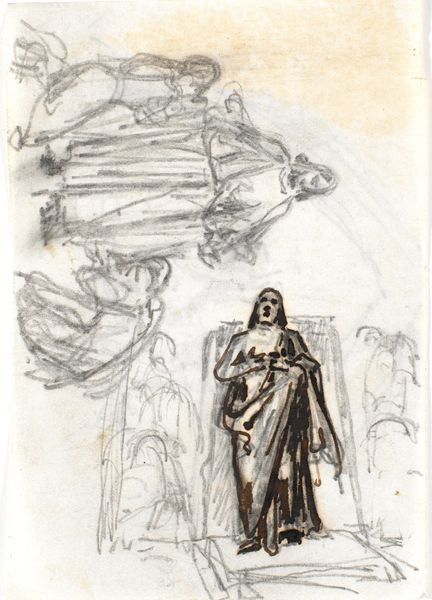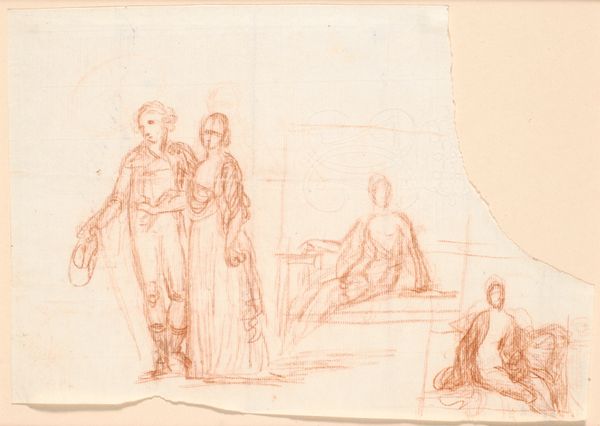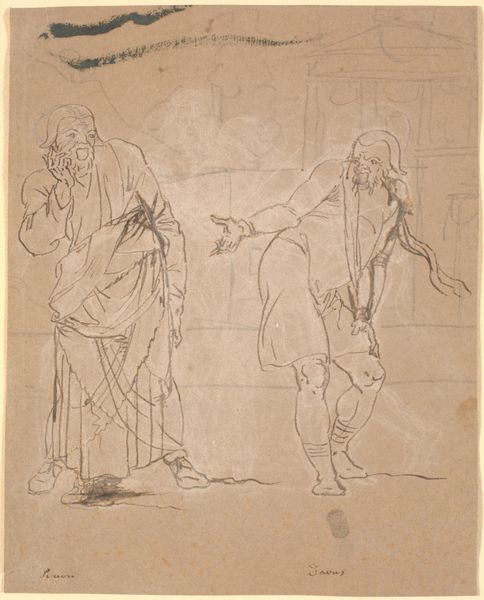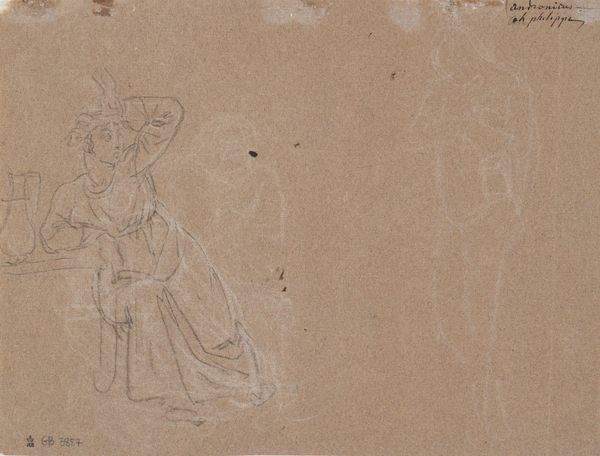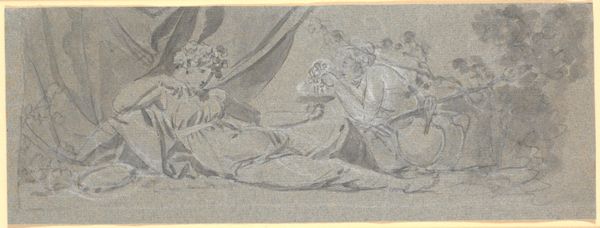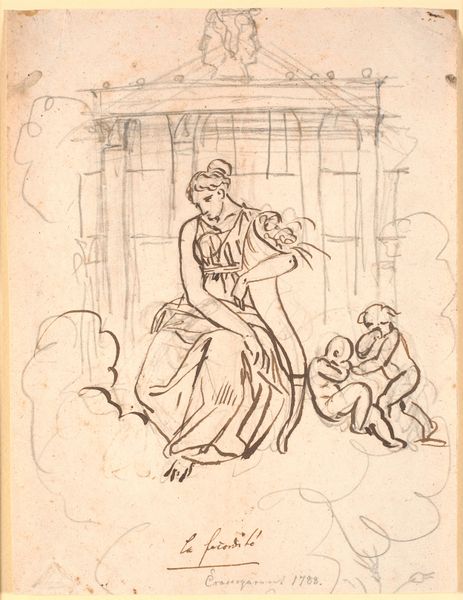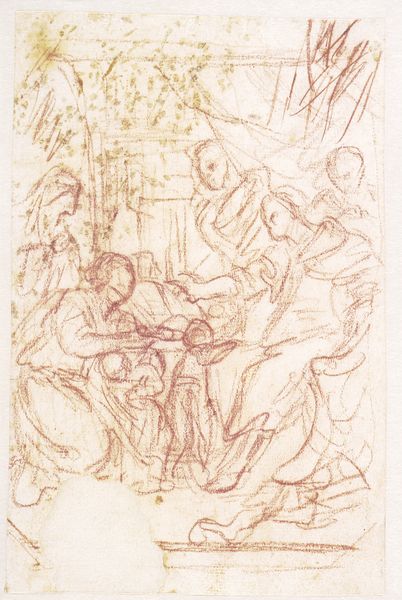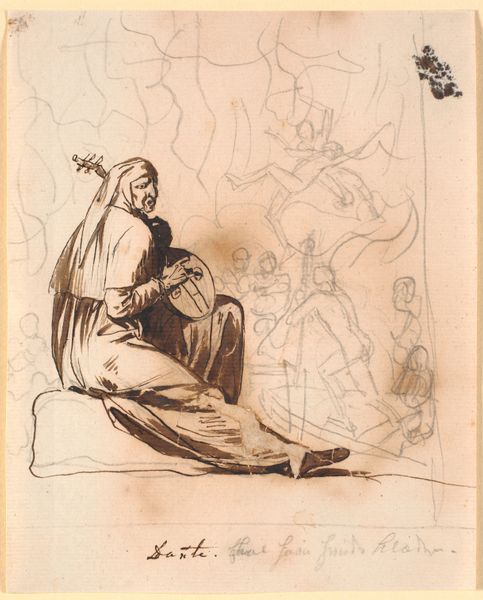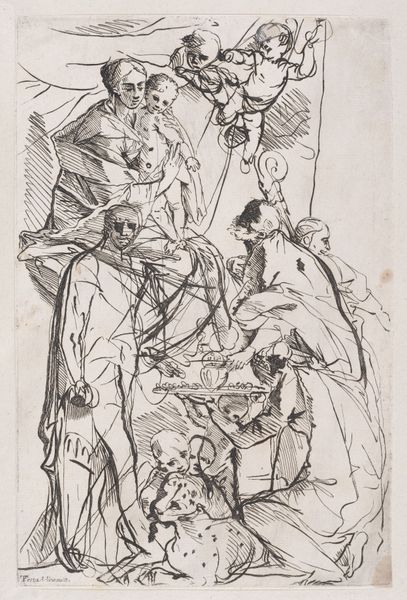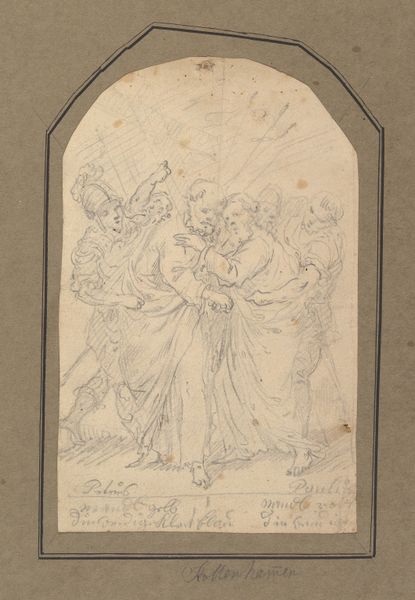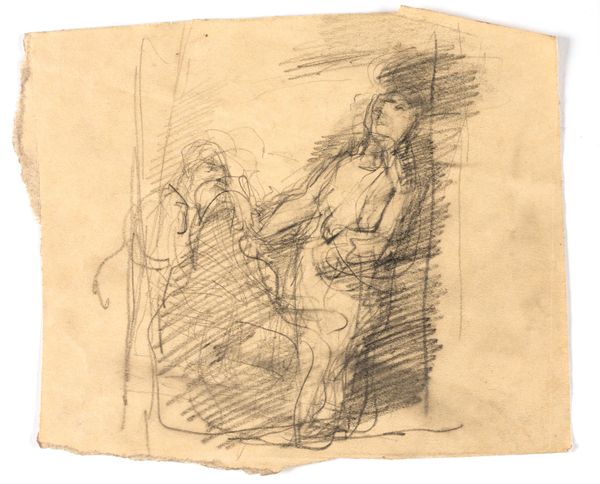
drawing, ink
#
portrait
#
drawing
#
pen sketch
#
ink
#
romanticism
#
history-painting
#
academic-art
Dimensions: 72 mm (height) x 61 mm (width) (bladmaal)
Curator: This drawing is entitled "Den opstandne Kristus," or "The Resurrected Christ," and was created in 1847 by Martinus Rørbye. It is crafted with ink on paper and currently resides at the Statens Museum for Kunst. My first impression is a kind of weightless solemnity. Editor: It has an almost ethereal quality about it, doesn’t it? I’m drawn to how Rørbye has captured a very distinct moment of awe and perhaps a sense of fear with so few lines. Curator: Absolutely. Note how Rørbye employs this minimal linework, particularly the contrasting bold strokes around Christ himself. The darker ink accentuates him, drawing our focus. Consider the two kneeling figures, presented in positions of subservience and worship. It’s a timeless composition really. Editor: Subservience is the operative word. Who were the figures designed to appeal to and include? And, perhaps, more urgently: who might they implicitly exclude or dominate through this visual language? I also note Rørbye was a staunch nationalist, with many North African influences—did that cross-cultural engagement soften any social boundaries, or further entrench already hardened hierarchies? Curator: Well, this portrayal aligns directly with Christian iconography depicting Christ's resurrection and subsequent encounter with his followers. Those are, according to Biblical canon, Mary Magdalene and another woman at the tomb. Editor: Precisely. So what established notions about authority, faith, gender roles, and devotion are at play here? It feels like the very medium echoes an old-world sense of power. A sketch intended perhaps as groundwork to build a dominant narrative? Curator: Perhaps. But, from the symbolical perspective, it speaks to an enduring hope and renewal, deeply embedded in cultural consciousness. The ink—a material traditionally associated with permanence—emphasizes the everlasting nature of faith and the promises of Christian doctrine. Editor: I agree with the symbol of faith being strongly evoked through Rørbye's use of medium. Yet, perhaps in light of current issues about political identity, its initial social implications also bear scrutiny, too. Curator: Food for thought, indeed. Despite these perspectives, I still come back to the power and delicacy found within these simple strokes and shadows that render this key biblical narrative. Editor: Yes, considering these layered perspectives is why I find the artwork relevant still. Hopefully these contextual ideas allow everyone to bring their own insight too.
Comments
No comments
Be the first to comment and join the conversation on the ultimate creative platform.

